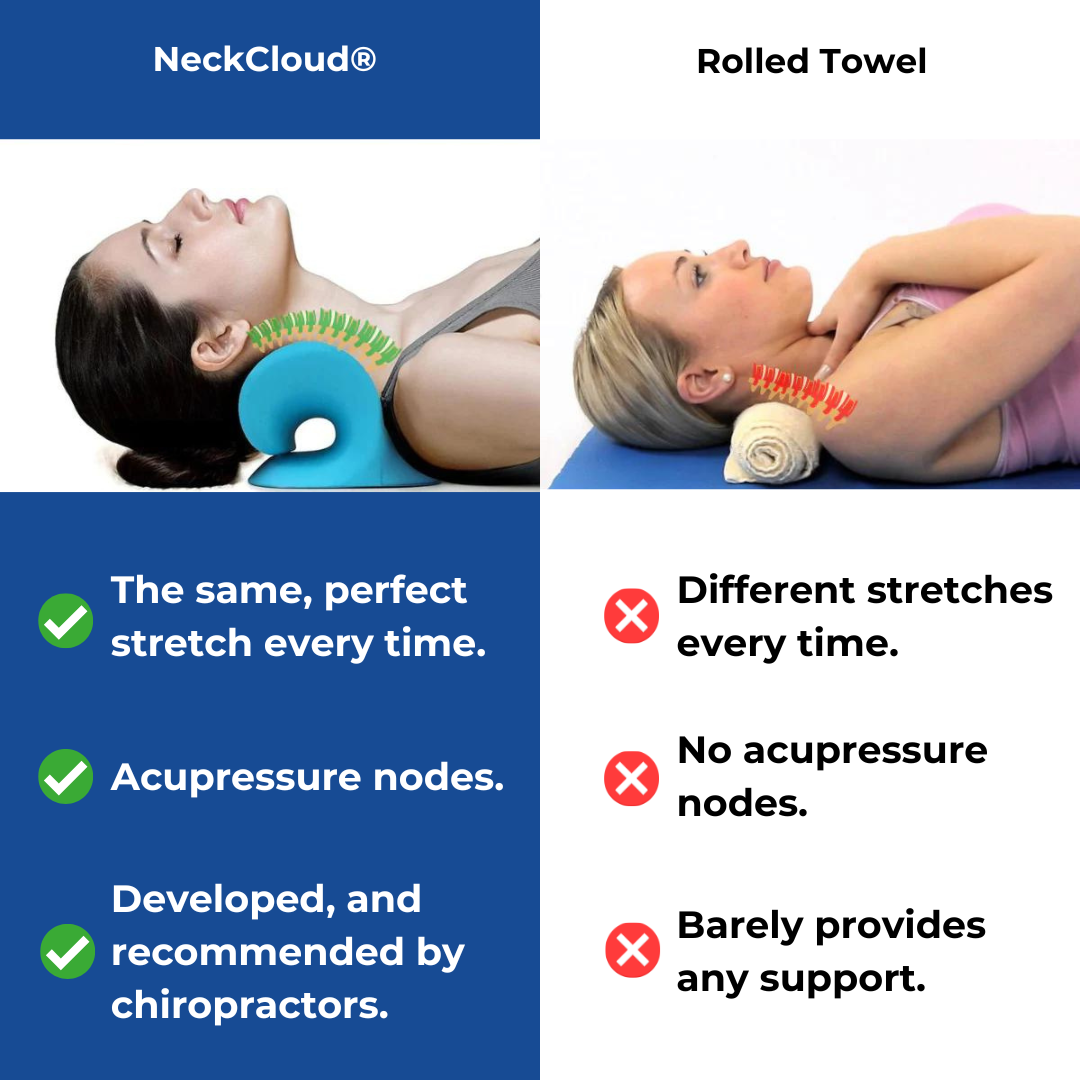Get Long Lasting Relief with the Neck Cloud: The Ultimate Neck Support
Get Long Lasting Relief with the Neck Cloud: The Ultimate Neck Support
Blog Article
Neck Discomfort in the Workplace: Determining Threat Factors and Applying Ergonomic Solutions
Neck discomfort in the office is a widespread issue that can affect employee wellness and efficiency. By understanding the various danger variables contributing to neck discomfort and applying ergonomic solutions, organizations can develop a more helpful work atmosphere.
Common Sources Of Neck Discomfort
Neck pain in the work environment is a prevalent problem that can be attributed to several usual causes. One of the primary perpetrators is bad pose, which usually arises from long term periods of sitting improperly at a workdesk or workstation. This can lead to stress on the neck muscle mass and joints, causing discomfort and pain. In addition, repeated motions such as constant flexing, twisting, or getting to can likewise add to neck discomfort gradually. Straining the neck by holding it in an awkward placement for extensive periods, like cradling the phone in between the ear and shoulder, can worsen the problem (neck cloud).

Ergonomic Threat Aspects
Poor functional designs in the workplace can significantly add to neck pain among staff members. Elements such as incorrect desk elevation, insufficient chair support, and unpleasant positioning of computer system displays can all contribute in the growth of neck pain. When workers are forced to rest for extended periods ready that strain their neck muscle mass, it can bring about stiffness, discomfort, and also more severe bone and joint issues gradually.
Additionally, bad ergonomic techniques can cause employees embracing uncomfortable postures while working, such as craning their necks to see a computer system screen or reaching annoyingly for a computer mouse or key-board. neck cloud. These repetitive motions and abnormal positions can place undue stress and anxiety on the neck and surrounding muscle mass, bring about discomfort and decreased efficiency

Desk Arrangement Recommendations
To minimize the danger of neck discomfort and discomfort, there are a number of desk configuration suggestions that employees ought to think about. Guarantee that the computer monitor is positioned at eye level to prevent straining the neck by looking up or down.
It is also important to have sufficient lighting to decrease eye pressure, as scrunching up your eyes or leaning onward can bring about neck tension. Arrange the desk design to maintain regularly used items within arm's reach, restricting the demand for repetitive twisting or reaching movements. By carrying out these workdesk setup recommendations, workers can develop a more ergonomic work area that sustains neck wellness and lowers the danger of creating occupational neck discomfort.
Stretching and Workout Tips
Basic desk-friendly stretches can aid minimize neck discomfort and prevent tightness. Neck rolls, shoulder shrugs, and mild side-to-side neck stretches are effective in eliminating tension.
It is vital to take time-outs throughout the day to perform these workouts. Establishing pointers or using applications that prompt motion can help establish a normal extending routine. It why not try this out is essential to listen to your body and prevent overstretching, specifically if you next page are brand-new to these exercises. Uniformity is key, so aim to integrate extending and exercise right into your day-to-day work regimen. By prioritizing these tasks, you can improve your physical health, reduce the threat of neck pain, and boost your general productivity in the office.
Value of Routine Breaks
In a hectic workplace where needs can add to physical strains like neck pain, developing a regimen that highlights the significance of regular breaks is paramount (neck cloud). Taking normal breaks throughout the workday is vital for alleviating and preventing neck discomfort. Extended periods of resting or recurring jobs can result in muscle stress and rigidity in the neck and shoulders. By integrating brief breaks into the job regular, workers can decrease the risk of creating neck discomfort and improve overall convenience and performance.
Regular breaks enable staff members to rest their muscular tissues, stretch, and change placements, avoiding rigidity and advertising much better blood circulation. Encouraging workers to take quick breaks every 30-60 mins can straight from the source help minimize the accumulation of tension in the neck and shoulders. These breaks can likewise work as an opportunity for workers to exercise leisure techniques or gentle neck stretches, better promoting musculoskeletal wellness. Implementing a culture that values and focuses on routine breaks can have a substantial impact on minimizing neck discomfort and boosting overall well-being in the work environment.
Verdict
To conclude, addressing ergonomic risk factors and carrying out correct workstation arrangements are important in minimizing neck discomfort in the office. By advertising great position, offering sufficient support, and encouraging normal breaks and stretches, companies can develop a much healthier and a lot more efficient workplace for staff members. Focusing on worker well-being through ergonomic remedies is vital to stop discomfort and improving total office contentment.
Neck discomfort in the work environment is a prevalent concern that can influence worker well-being and performance. By determining and dealing with these common reasons of neck pain in the workplace, companies can take positive steps to create an extra comfortable and ergonomic job environment for their employees.
Poor ergonomics in the office can substantially contribute to neck pain amongst workers. By applying these desk arrangement suggestions, employees can produce a more ergonomic work space that supports neck wellness and decreases the risk of creating occupational neck discomfort.
Neck rolls, shoulder shrugs, and gentle side-to-side neck stretches are efficient in eliminating stress.
Report this page